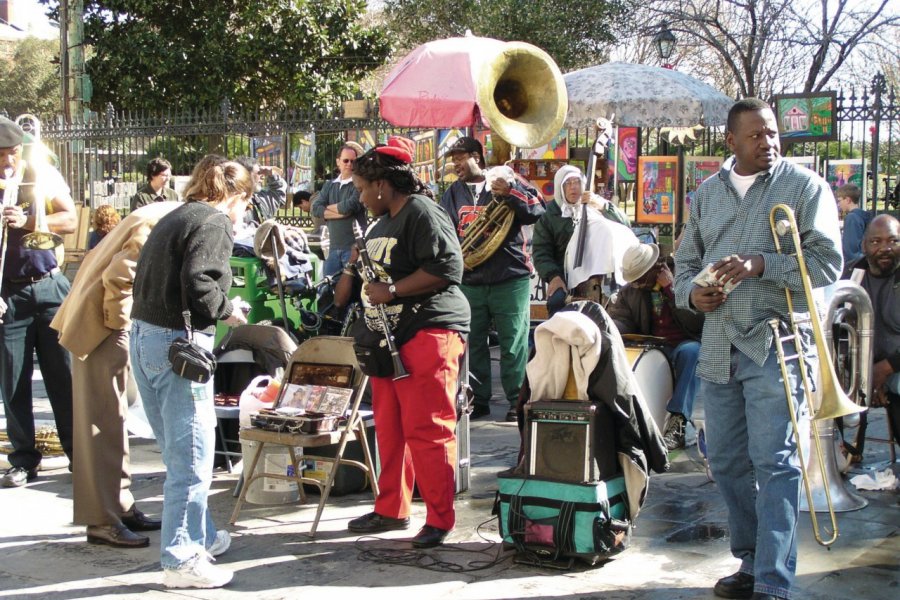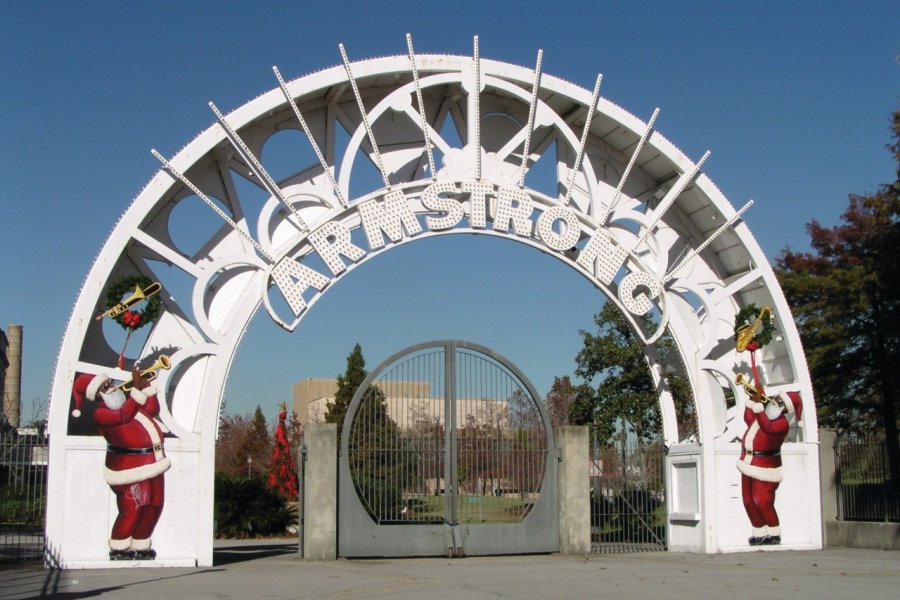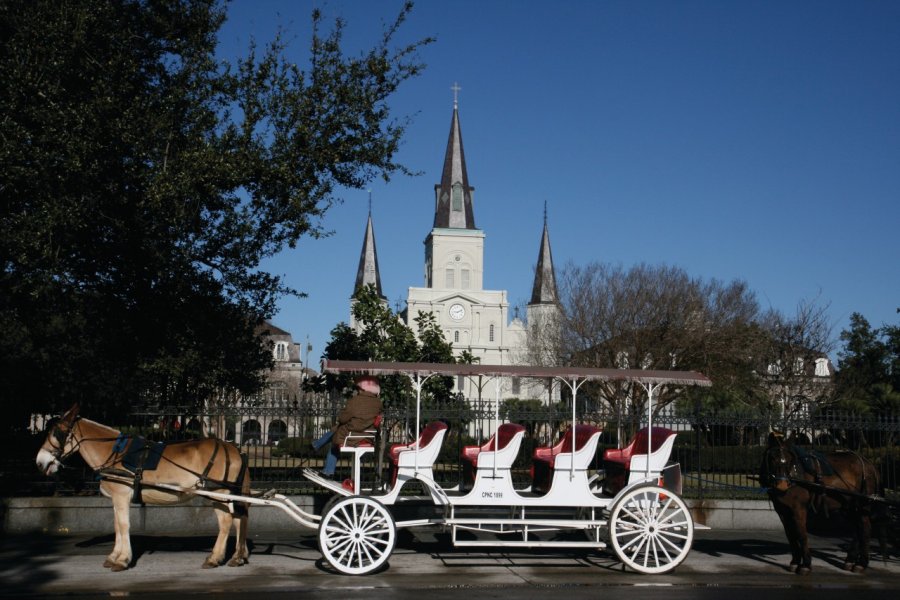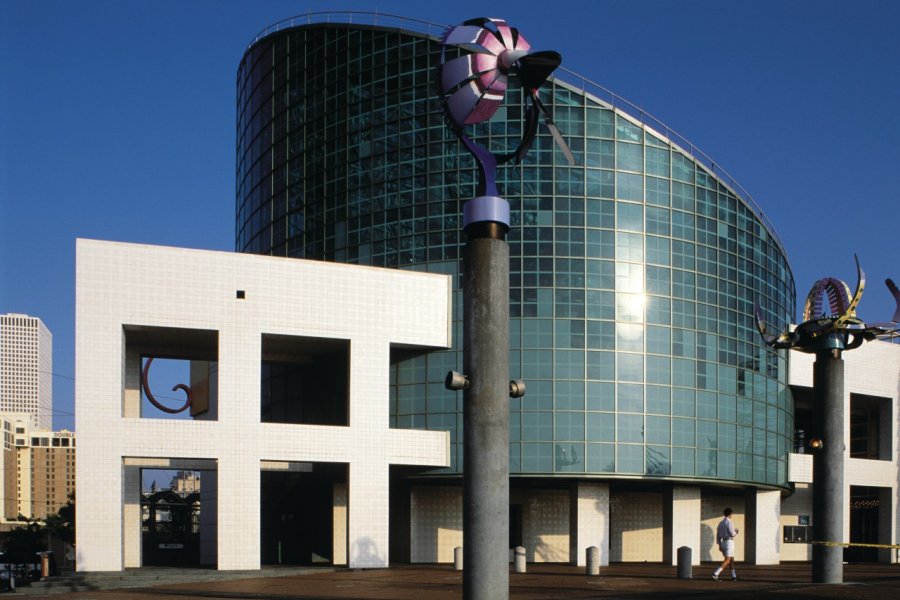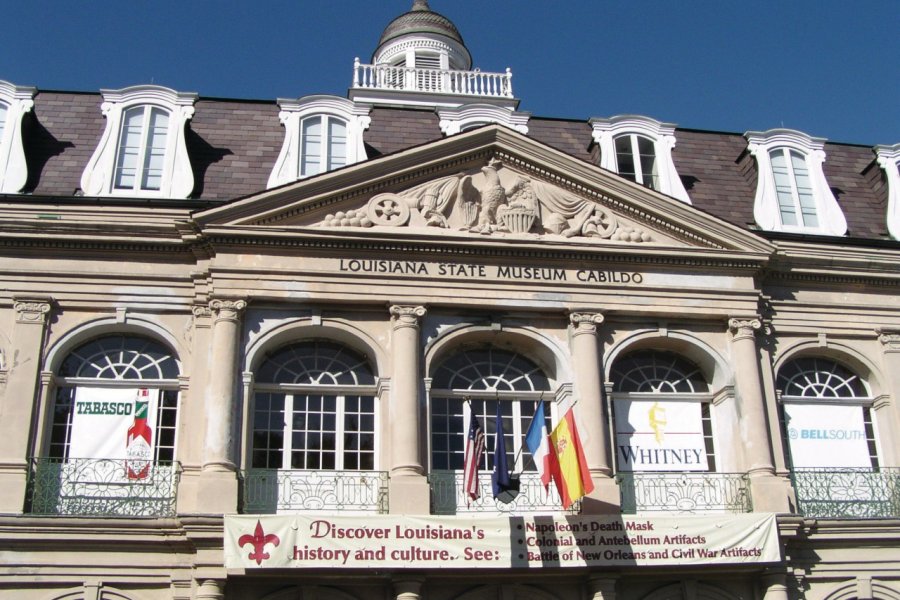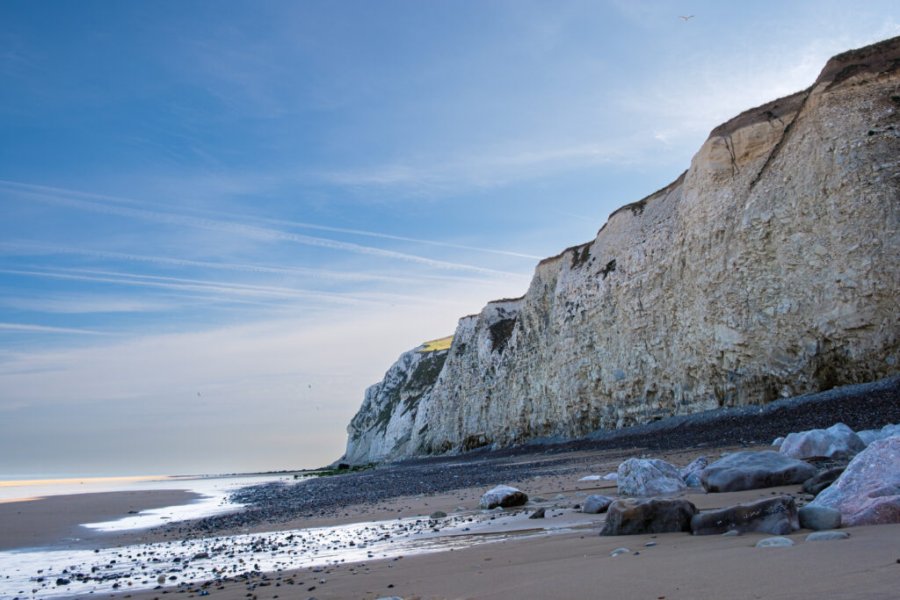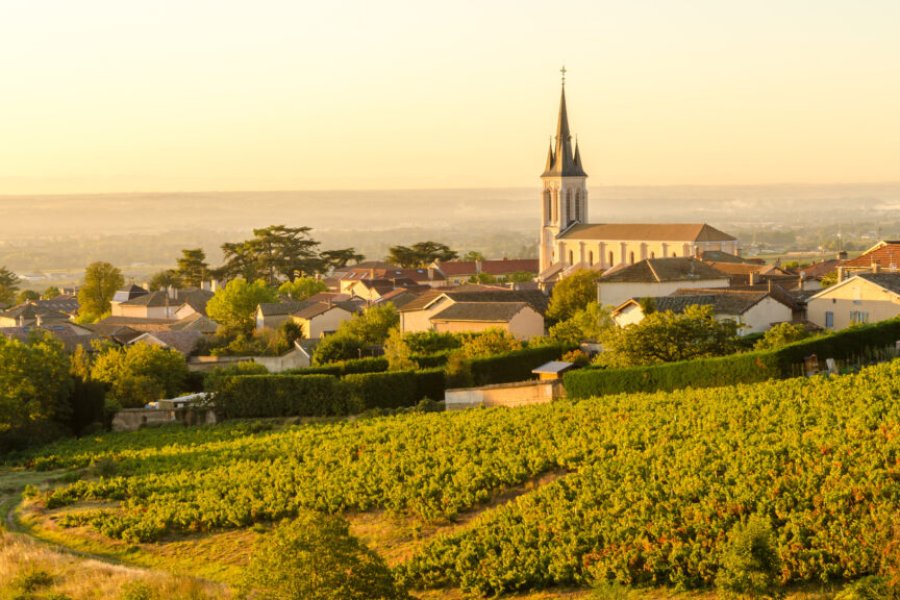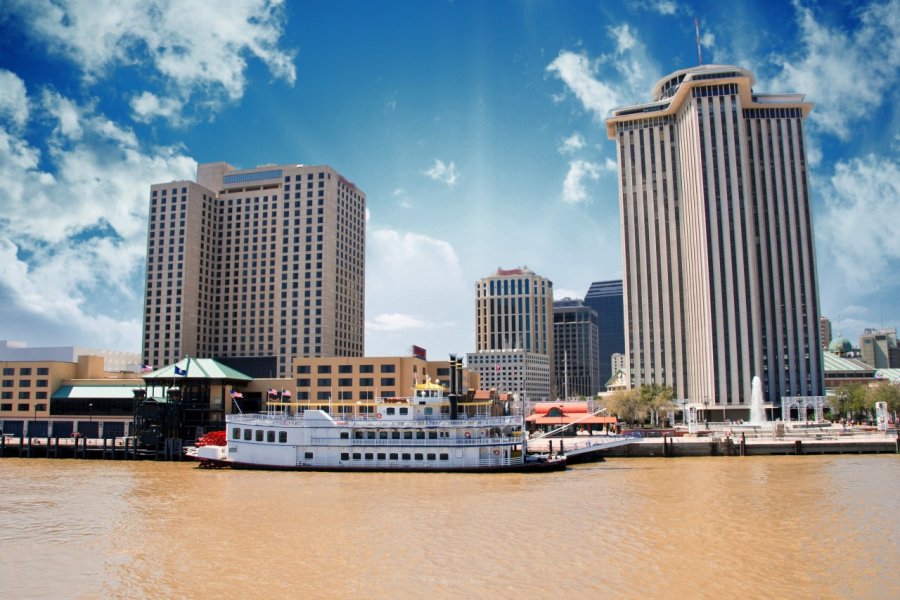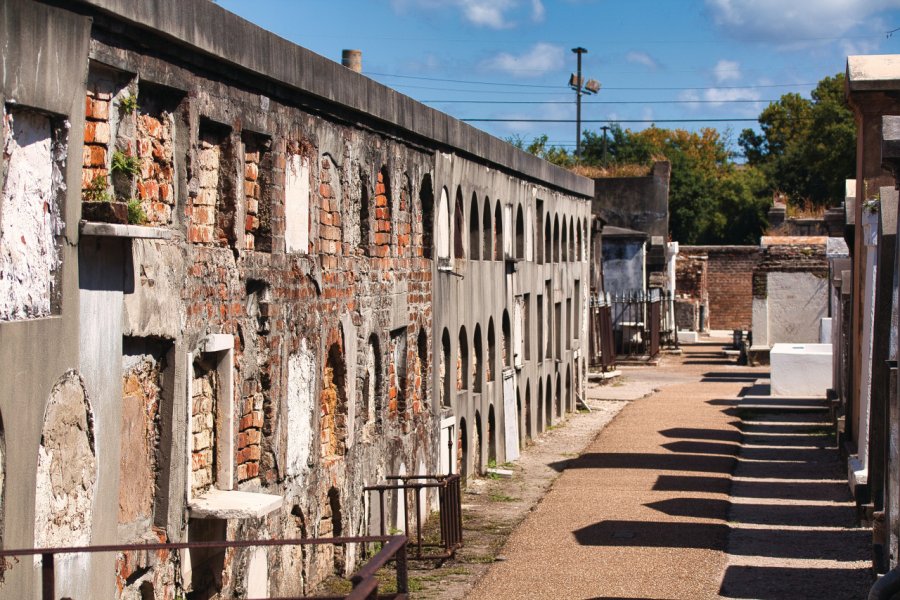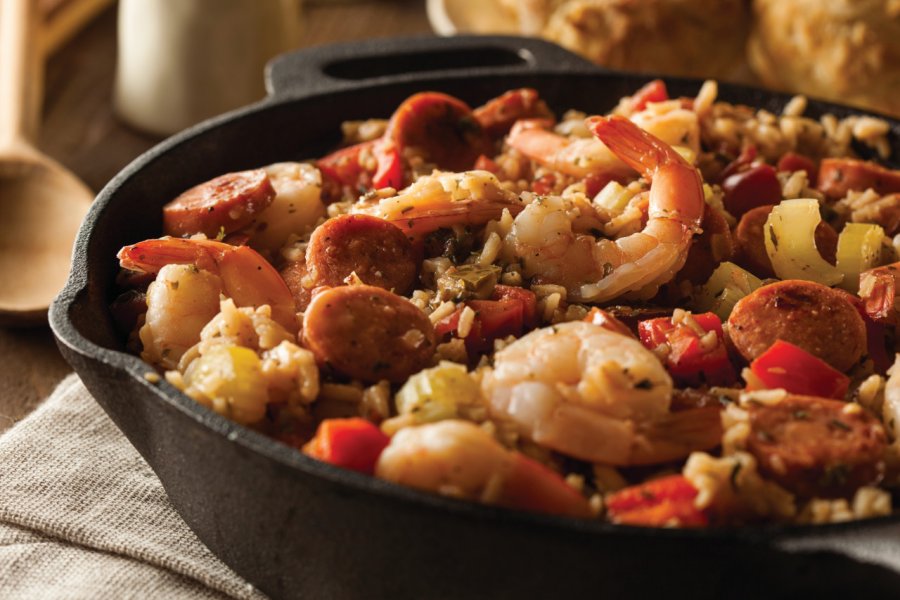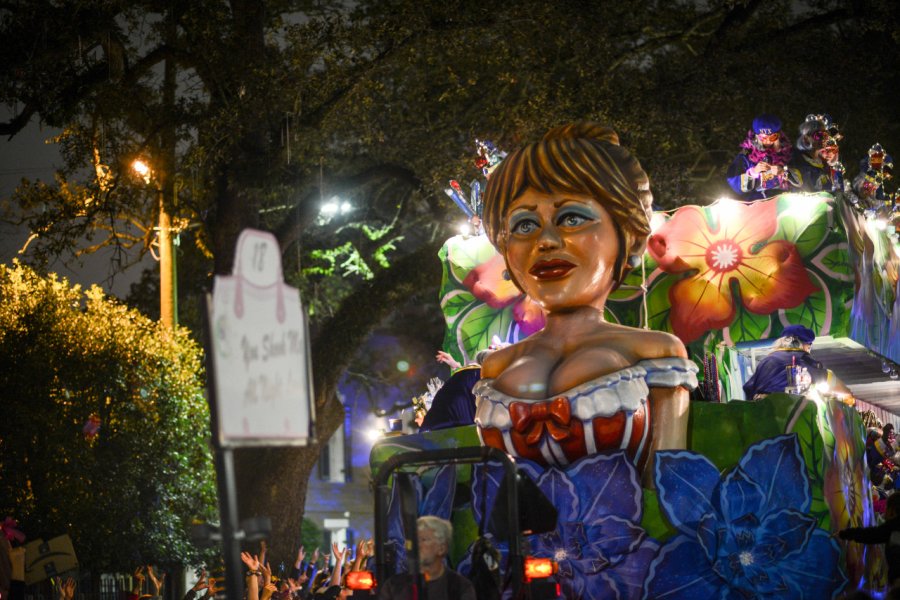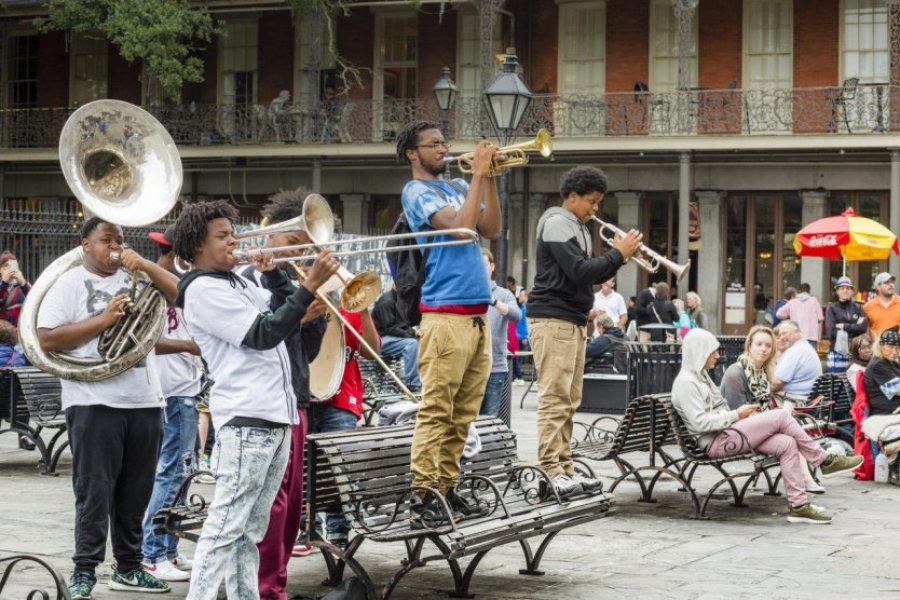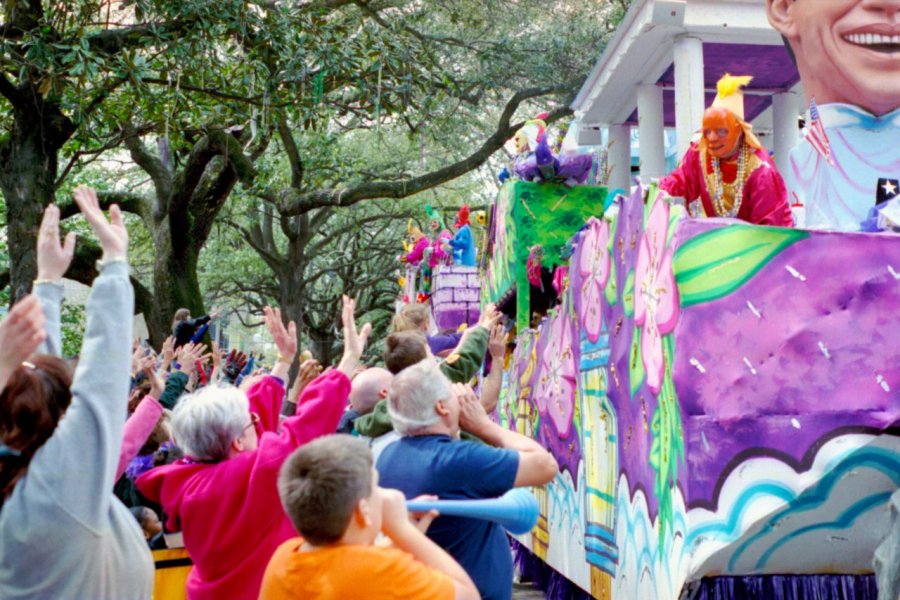Travel Guide New Orleans
Find an accommodation
Advertising
New Orleans, or more intimately NOLA, is located on the Mississippi River, 20 miles from Lake Borgne, the western end of the Gulf of Mexico, and south of the immense Lake Ponchartrain. With 379,000 intramural inhabitants, it's Louisiana's largest city.Created in 1718 by the French, under the direction of Jean-Baptiste Le Moyne (1680-1767), Sieur de Bienville, the city became Spanish in 1762, after being capital of French Louisiana from 1723. It was destroyed by two fires in 1788 and 1794. To ensure that the city is not devastated a third time, the Spanish introduced strict rules for reconstruction: tile roofs, brick houses, separation walls for interior gardens, removal of the alleys. Thus, everything considered to be the characteristics of classical architecture during a visit of the French Quarter (arches, courtyards, balustrades, wrought iron portals) is of Spanish origin.In 1800, the city returned under French control, before Napoleon Bonaparte sold Louisiana to the United States in 1803.In 1815, during the War of Independence, the Battle of New Orleans ended with a victory by the American forces, led by Andrew Jackson (1767-1845) and helped by the French freighter Jean Lafitte (1770-1823?), against British troops.When the Civil War broke out in 1861, New Orleanais were not really in favor of Confederation for fear of breaking down trade with states upstream of Mississippi. After several battles at the gates of the city as of April 25, 1862, the mayor preferred to go to the Union's forces on May 1. The taking of this important place had a strong international impact. The town's very firm administration by General Benjamin Franklin Buttler (1818-1893) made him one of the most controversial characters in the conflict.At the end of the war, New Orleans had great difficulty in surviving economically. She remained capital of Louisiana until 1880 (passing the relay to Bâton Rouge), while quickly gaining a reputation as a place of debauchery and tribes.The 1920 s were decidedly crazy: jazz, power of the Italian mafia, prostitution in the French Quarter. New Orleans' sulfurous reputation was going to follow her for decades.In the 1960 s, a series of violent clashes occurred when the city attempted school desegregation.During the 1980 s, 1990 s and 2000 s, New Orleans became increasingly dependent on tourism, while the low level of education in the majority of the population, the high rate of household poverty, and the significant increase in crime continued to influence the city's prosperity. Then, on August 29, 2005, Hurricane Katrina hit New Orleans. The rest is known only too well: evacuation, flood, more than 1 800 officially reported deaths…Today, tourist sites have regained their splendor and most of the outlying neighborhoods have been rehabilitated. Although very extensive, the city is generally only visited for a few specific areas. The French Quarter is the most popular, followed by Marigny, Warhouse District (Art District) and Garden District. Tremée, too often overlooked, houses several interesting sites that deserve a detour.
What to visit New Orleans?
Advertising
Suggested addresses New Orleans
x 119
The best restaurants
x 126
The best hotels
x 107
The best visits
x 22
The best transportation
x 110
The best outings
x 5
Sport and leisure activities
x 19
The best treats
x 4
The best care
x 34
The best stores
x 8
The best home-deco
x 11
The best services
x 27
The best events
x 56
The good plans
Weather at the moment
Advertising
Organize your trip with our partners New Orleans
Transportation
Book your plane tickets
Car Rental
Boat rental
Accommodation & stays
Find a hotel
Holiday rental
Find your campsite
Tailor-made trip
Immersion travel
Services / On site
Activities & visits
Find a doctor


